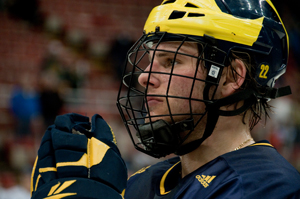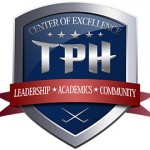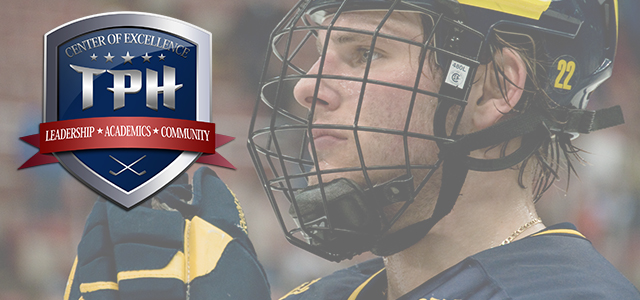Naurato: Are you working hard or working smart?

Brandon Naurato –
I was talking to a family the other day and I asked their 17-year-old a simple question: What are your plans for the summer when it comes to training on and off the ice? He said, “Coach, I’m working on my skating with a figure skating coach and I’m training with an MMA fighter.” In my head, I’m thinking, “Wow, this kid is going to be the toughest figure skater that the hockey world will ever see.” All players are different, yes. What works for some may not work for others. But when it comes to your development as a hockey player, you have to work on specific skills (on and off the ice) that correlate to your game. A figure skater may be able to teach you better skating…but can they teach you to use that skating in the context of a hockey game? Be careful not to work on things in isolation. Everything you do to prepare and train should be with the goal of improving your game, not just the specific skill. There are far too many options when it comes to training. Educate yourself and ask questions on why this type of training is good for you and how it can improve your game going into next season. Get with the people that have been at the level that you strive to get to or work directly with players at that level.
You can train dogs…you need to teach men!

Like I’ve said all along, the first thing you need to do is understand what type of player you currently are and what type of player you want to be. Someone who is 5-foot-6 is going to train in a completely different way then someone who is 6-foot-5. As a youth player, you should not label yourself as a goal scorer, a playmaker, a grinder, or an offensive defenseman. It is imperative that you understand your strengths as a player, improve your weaknesses, work on your overall game and stop focusing on the labels. For example, if you scored 50 goals as a midget player, you would probably label yourself as a goal scorer. But the first question a coach or scout will ask your head coach or respected people in the area is, “what is that player doing to having an impact on the game when he’s not scoring goals?” I can almost guarantee that the same player will not score 50 goals at the junior level. So how does he help his new junior team win when he’s not scoring?
- Does he make plays on the wall to get the puck out of the defensive zone?
- How are his puck-touches while entering the offensive zone?
- How are his routes without the puck? Does he jump into holes and support his teammates?
Sit down at home and come up with a list of three attributes that you are going to concentrate on this summer to improve your overall game as a player. Listed below are a few that the top players in the world all have in common. It is crucial to understand why they are all so important.
Off-ice strength, conditioning/speed and agility – What are your goals? Is it to put on lean muscle and lose body fat or is it to put some more weight on your frame? You need to have an off-ice workout plan and it needs to be hockey specific. I’ll repeat that. IT NEEDS TO BE HOCKEY SPECIFIC. Improving your overall athleticism while gaining strength in the right areas will not only make you more confident as a player, but it will also put you in a position to win more one-on-one battles and stand out as a dominant player.
On-Ice skills (eg: shooting, stickhandling, passing, hand-eye) – At a young age I would highly recommend that players shoot pucks in their driveway, stickhandle in the garage, and pass the puck around with buddies at the start of practice. These are the times to understand how to mechanically shoot, pass, and stickhandle the right way. Once you know how to do it, you need to understand why and when to use these skills. Just like a pitcher in baseball, a shooter in hockey has more than one way to shoot or score. Pitchers don’t always throw a fastball…they change it up. They throw in a slider, curveball or sinker to keep the batter guessing. The same goes for scoring goals in hockey. It is important to understand when and why you are using a specific shot when it comes to filling the net.
Skating Attributes (eg: edge work, overspeed training, power skating, and stride work) – Skating is one of the most important attributes when it comes to making or breaking a player’s career at the next level. Kim Muir is a highly respected skating coach in the area that works with NHL players all the way down to mites. Her slogan “Can’t Skate, Can’t Play” pretty much sums it up. The attributes above all make up a great skater, but understanding how to use these attributes in a game situation can separate you from the rest of the competition. For example, next time you are working on your edges, ask your skating instructor how it correlates to a game. Game situations like escaping from the down-low defenseman by using body positioning and accelerating out of your turn or buying time and space on an in-zone entry are a couple of examples of how using your edges can put you in a position to provide separation from the opposing player. Separation means more time and space and a higher percentage of making a quality play in any of the three zones on the ice.
Hockey IQ – This is by far the most important attribute that a hockey player can possess. You can throw all of the skills and strength out the window if you don’t have a mind for the game. This is what separates the good players from the great ones. Watching video of yourself, asking questions to your coaches and becoming a student of the game are a few ways to improve your hockey IQ. Working on your skills on the ice and building your overall athleticism off the ice will only take you so far. You need to understand when and why to perform these skills on the ice. Have you ever heard the term “practice player”? These are the guys that look great at camp or in a practice setting because their individual skills are extremely good. The bottom line that I mentioned earlier is “can this player help my team win and how?” Understanding the game within the game puts you in a position to dictate how the game plays out.
Hockey is an imperfect game that has so many little things that go into becoming an elite player. Nobody is perfect, but we are all trying to get there. Understand what makes you a good player and what is holding you back from becoming great. Work on those skills, understand when to use them, and you will find success in this game.

